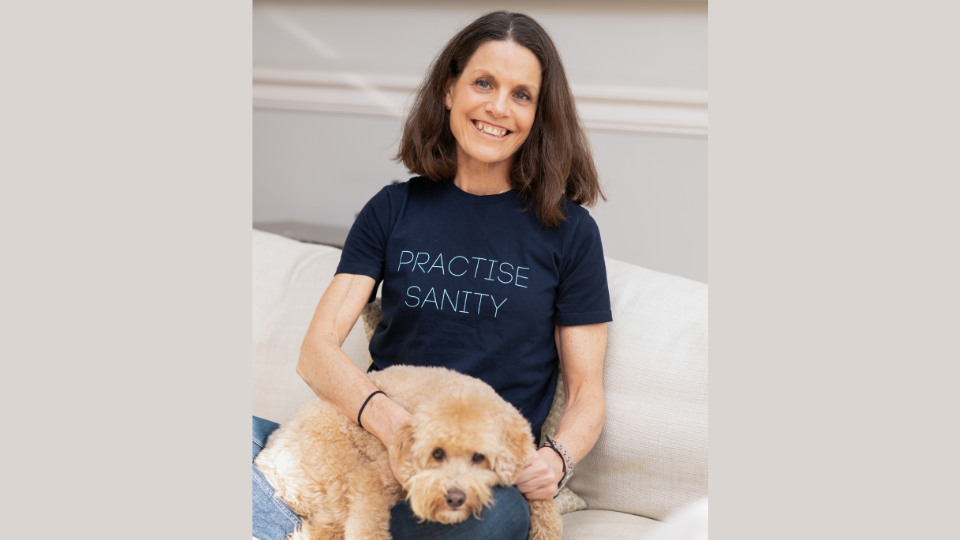
Kelly shares what gets in the way of wellbeing, why we tend to avoid discomfort, and practices to support our mental health.
Earlier, I wrote a brief introduction to the ‘Sanity Practice’ gatherings I’m facilitating with Movement for Modern Life this autumn. In that blog, I laid out the intention of introducing psychological theory and experiential practices to support our mental health. Ahead of the first session, I’d invite us to start by looking at any existing obstacles that thwart health and growth. We can think of this as preparing the ground in the garden of our psyche; before new seeds are planted, we need to clear out the roots of pernicious weeds.
A question we can consider in doing so – what gets in the way of wellbeing?
Read more about yoga for stress and anxiety in this complete guide
What gets in the way of wellbeing?
There is no shortage of stressors we can point to in the wider world, and I don’t want to minimise these for a second. But our personal wellbeing can’t be held hostage to external events, particularly when 21st century living won’t stop throwing us challenges to contend with. A focus on what’s going on ‘out there’ can also leave us overlooking what’s happening ‘in here’ at the individual level. This prevents us from addressing the ways we are cultivating harmful weeds rather than eradicating them.
In my last piece, I quoted the author and therapist Bruce Tift’s wise counsel that sanity is a practice. Here I include a longer quotation of his, one that hints at what might get in the way of our wellbeing: ‘Sanity is not an achievement; rather it is a practice, never resolved, always requiring more effort than the practice of neurosis.’ The italics are mine as these words are the focus of this second blog.
‘Sanity is not an achievement; rather it is a practice, never resolved’
Bruce Tift
What does Tift mean when he talks about the practice of neurosis? Neurotic behaviour is an automatic, unconscious effort to manage deep anxiety. It is the anxiety itself that drives unhealthy repeated actions as coping mechanisms. But rather than easing our distress, these actions tend to exacerbate it. As these are often unconscious, many of us are ‘practising neurosis’ without realising it!
What gets in the way wellbeing?
We can all ask ourselves this important question, focusing on the personal. What are our own beliefs or behaviours that have become weeds detrimental to our health? What obstructs contentment, appreciation, even joy?
For some of us, an obvious answer(s) appears. For others, it isn’t so clear in which case we can just stay with the question, see what emerges in its own time.
In my experience, there is also another question that can help us hone in on our hindrances to wellbeing – how am I trying to avoid discomfort?
How am I trying to avoid discomfort?
‘Avoidance of discomfort’ is a catch-all phrase for the numerous strategies we employ to try and sidestep vulnerability. Such avoidance in whatever guise is perhaps the biggest detractor to wellbeing I encounter in my work as a psychotherapist (and in myself if I’m not careful!). Attempts to dodge negative emotions are entirely understandable but ultimately detrimental to our health for several reasons:
- Our avoidance mechanisms are ‘energy vampires.’ Enormous energy is consumed in the many tactics we employ, and the magnitude of this effort is often unappreciated.
- There are also usually negative consequences to our avoidance strategies. If we turn to, say, alcohol to numb stress in the near term, the next day we can end up with the same stress and a hangover. Or worse if done repeatedly. Most other avoidance tactics similarly leave us worse off down the road.
- The avoidance of difficult emotions doesn’t get rid of them. They are ‘buried alive’ and come out in distorted ways: they present as 3 am insomnia, they are somatised leading to chronic pain or illness in our bodies, they ooze out in petty arguments or inexplicable lowness …and on and on…
- By avoiding discomfort, we leave ourselves ill prepared to weather life’s inevitable disturbances. We’re out of practice metabolising the energy of negative emotions, out of ‘mental shape,’ and so less resilient. We become more fragile, overwhelmed too easily.
We live in an age of absolute abundance when it comes to distractions on offer. A 24/7 online culture colludes with our desire to stay insulated from vulnerability. Technology is the most obvious culprit. Ten seconds of mere boredom and we reach to our phones to escape. But there is no shortage of other options: Alcohol, substances, comfort eating, social media binges, doom scrolling to name but a few ways we crowd out distress on an ongoing basis.
I’d also add behaviours that are socially applauded but often mask avoidance of feelings, among these: intellectualisation, workaholism, perfectionism, consumerism. Or micro-managing / controlling behaviour served up as being ‘detail-oriented’ or ‘high-functioning’ but really driven by discomfort with the unknown or uncontrollable. Even our culture’s intense focus on productivity starts to feel a lot like a manic defence, a frenzy of activity in place of feeling.
How am I trying to avoid discomfort?
Once we are on to ourselves, aware of the ways we leave our emotional reality, we can work with these tactics. Importantly, we don’t want to judge or shame these learned neurotic behaviours; the aim isn’t to stamp them out as part of some never-ending self-improvement project. Rather than criticising our efforts, or making ourselves feel bad about our ‘distractors of choice,’ we can instead get curious what they are there for. Jung famously said that neurosis is always a substitute for legitimate suffering. When we catch ourselves ‘practising neurosis,’ we can acknowledge there is likely some legitimate suffering lurking beneath, trying to make itself known if we are open to it.
Many of us are working overtime – often without realising it! – to make sure we don’t have to face the full intensity of everything going on in our lives and in our bodies. We’ve learned to prioritise near term comfort over health and so find difficultly metabolising uncomfortable experiences and emotions. Practising Sanity means building the capacity to sit with the discomfort and work through it rather than around it. Facing what we’ve been trying to avoid can increase distress in the short term but allows for the longer-term benefits of greater physical and emotional health and also a wider understanding of ourselves and others. But first, as a mentor of mine says, we must ‘start by stopping.’ Time to get weeding!
To learn more, join us for weekly Sanity Practices kicking off September 12th. Link to more information here.
Read more in Yoga for Stress and Anxiety: A Complete Guide
Read more:
Read more about the Sanity Practices in Kelly’s first article ‘Practice Sanity this Autumn’
How Yoga can help with Stress and Anxiety
About Kelly:

Kelly is a psychotherapist and co-founder of Examined Life, a collective of therapists. She is accredited by the UK Council for Psychotherapy (UKCP) and is a registered member of the British Association for Counselling and Psychotherapy (BACP). Kelly has wide experience working with individuals, couples and corporates in private practice, the NHS and at The School of Life. She is also a yogi and avid ‘sanity walker.’





Leave a Reply